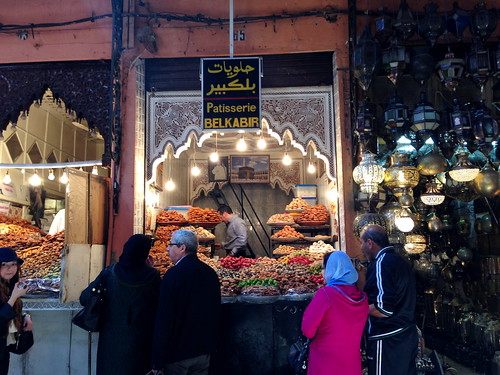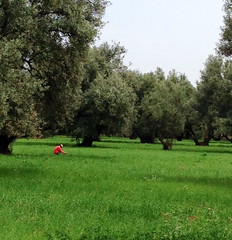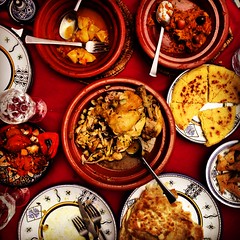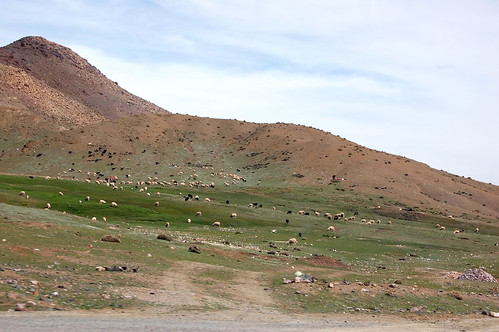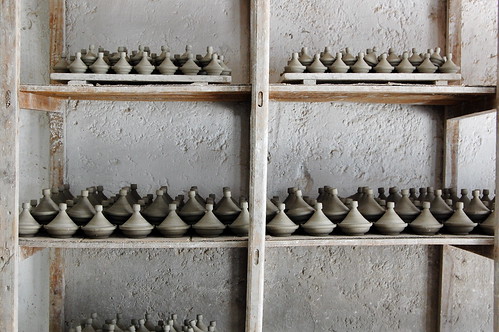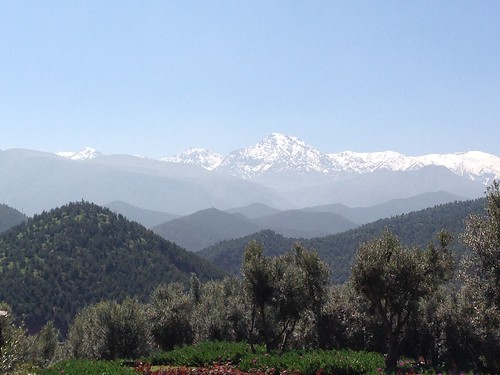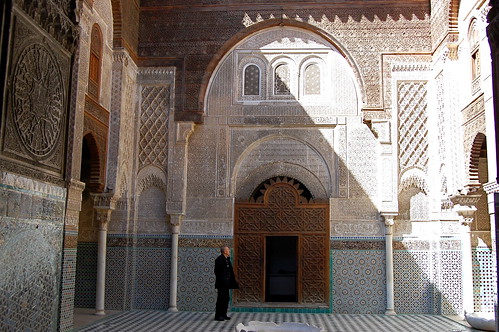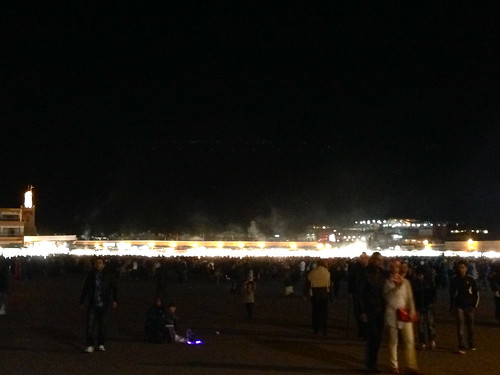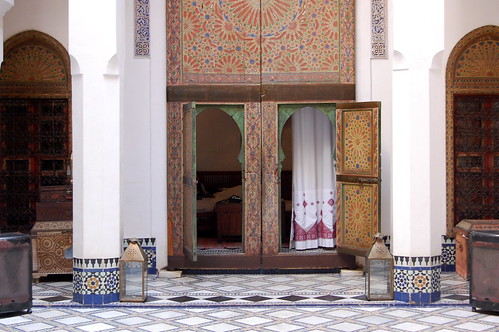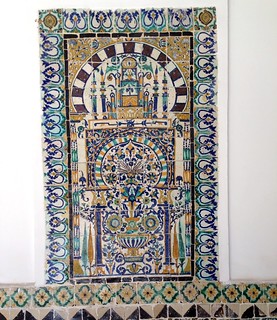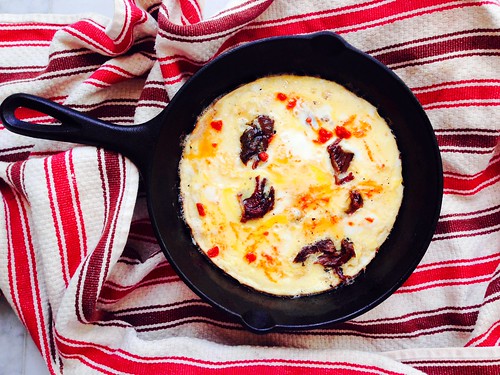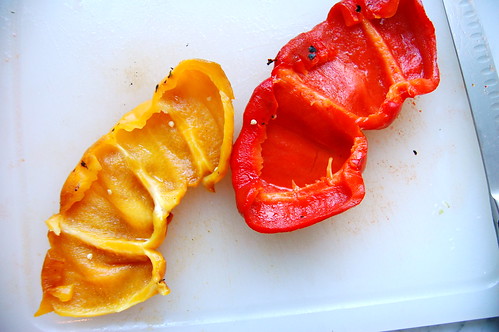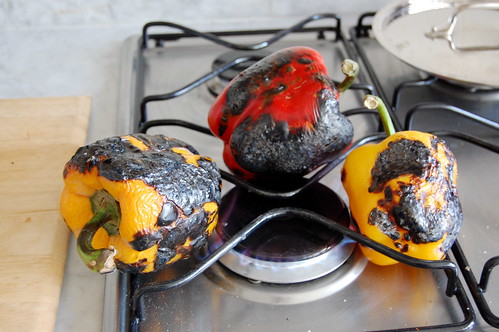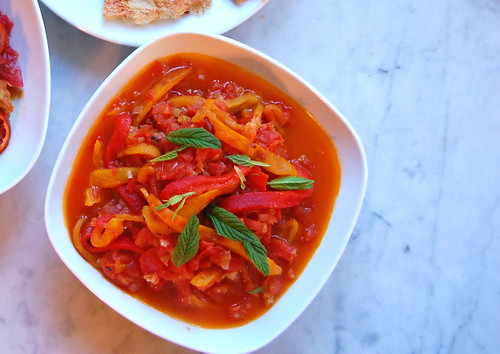
Here are a few items of culture shock upon our return to the U.S. :
-- $10 coconut water
-- It is so darn hot (says the person coming to the U.S. from North Africa) and I don't own a single item of clothing that comes above my knees. I bought my first pair of shorts in oh, about 7 years, and I felt uncomfortable wearing them for about 5 minutes. Then I thought shorts, what a marvellous idea!
--Wait, my 220v adapter doesn't work here?
-- The Middle East: where your herbs are free from your vege vendor Muhammad. America: where you pay top dollar for herbs in tiny plastic boxes.
-- People are so orderly on the airplane!!
-- So I can actually drink the tap water? Really?
-- Americans are OBSESSED with guacamole. Guacamole is delicious!
Among other things that I'm enjoying is rediscovering ingredients that I haven't had access to in years: snap peas! asparagus! rhubarb! We are briefly staying with Paul's parents, and we made a beer-can chicken the other night that shall go down in the legendary catalog of best chickens I have ever eaten. It was THAT good.
If you are wondering where we are headed now that our time in Algiers is over, the exciting news is two fold. First, we will be headed to another Middle Eastern post in the fall (yay! my poor husband seems content to be dragged around by his wife to learn even more about things like hummus and meshwi and how many things you can do with a chickpea.) But first, we get to spend several months in America, visiting our family and friends and rediscovering the joy of concerts in the park and picnics and going for long runs out of doors.

Speaking of chickpeas, today we have a sandwich that is a Moroccan favorite of ours. This is a simple sandwich of fresh cooked chickpeas smashed into some bread and topped with chopped hard boiled eggs and a bit of red pepper and cumin. It is the simple kind of cuisine that I think America has lost, preferring to stuff our sandwiches with piles of meat or fried balls of cheese. But after happily devouring chickpea sandwiches on the streets of Fez, we've begun to make them at home too.
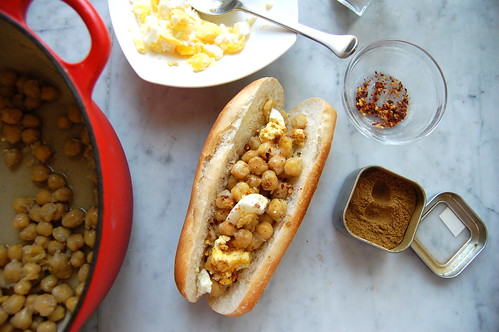
Fassi Chickpea Sandwich
This simple sandwich really relies on the quality of the ingredients. You really want to have fresh cooked chickpeas, warm, and steaming, and soft. You want good olive oil and spices and bread too.
For the chickpeas:
2 cups dried chickpeas
1 teaspoon baking soda
salt
For the sandwiches:
bread (you can use baguette style or pita style)
hard boiled eggs, chopped, usually 1/2 an egg per sandwich
olive oil
paprika or red pepper flakes
cumin
salt
optional toppings: tomatoes or chopped herbs
1. For the chickpeas: Soak the chickpeas in cold water overnight, or for 8-12 hours. Drain the chickpeas. Add the chickpeas to a heavy-bottomed pot and add the baking soda. Turn the heat on to medium and cook the chickpeas with the baking soda, stirring constantly until the mixture begins to foam. Now add plenty of water to cover and two big pinches of salt. Bring the mixture to a low simmer.
2. Allow the chickpeas to simmer uncovered for about 1 1/2 to 2 hours. The time will vary greatly depending on the freshness of your chickpeas. You want the chickpeas to be completely soft and to smush easily when pinched between your fingers. They should be just shy of falling apart. Drain your chickpeas, sprinkle with a bit more salt and set aside.
3. Make the sandwiches: Reheat your chickpeas if they have gotten cool. (I usually add a bit of fresh water to the pot and reheat them on the stove.) Split the bread. Add a little olive oil, salt, cumin, and paprika or red pepper to the bread. Now lightly smush the chickpeas into the bread. You want to kind of pack it with chickpeas. Top with the hard boiled eggs and then sprinkle liberally with more olive oil/salt/cumin/paprika. You really want to be generous with the seasonings. Eat warm.

